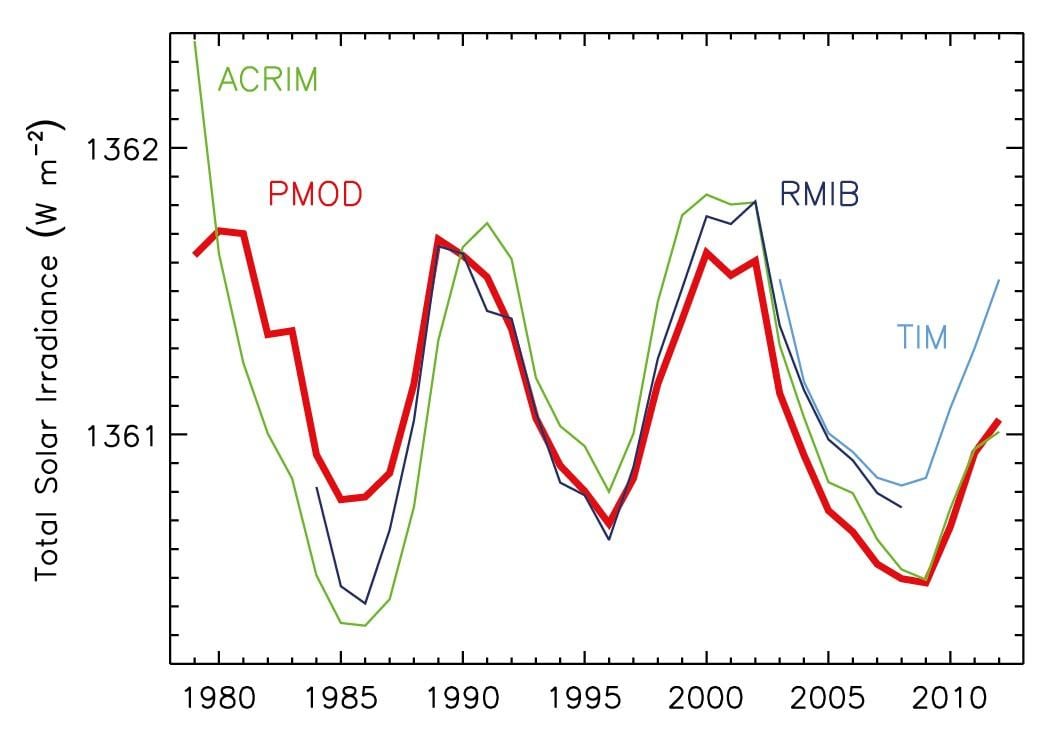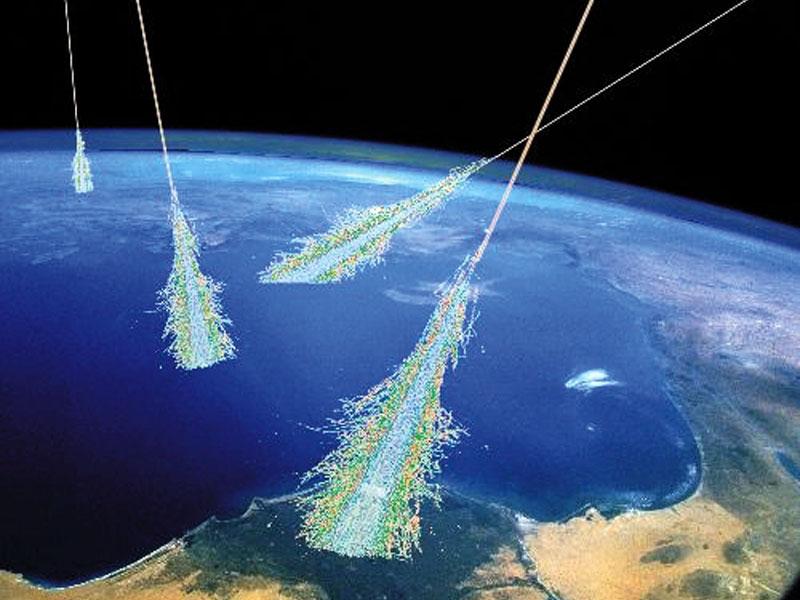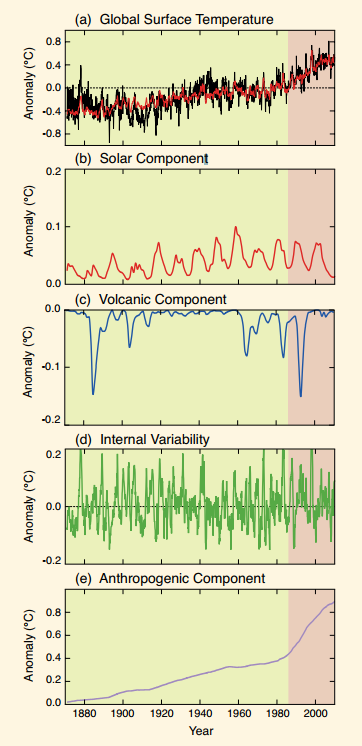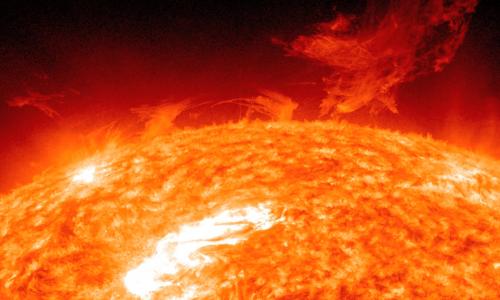Table of Contents

The Sun-climate connection
The Sun is the source of most of the energy that drives the biological and physical processes in the world around us—in oceans and on land it fuels plant growth that forms the base of the food chain, and in the atmosphere it warms air which drives our weather.
The rate of energy coming from the Sun changes slightly day to day. Over many millennia the Earth-Sun orbital relationship can change the geographical distribution of the sun’s energy over the Earth’s surface. It has been suggested that changes in solar output might affect our climate—both directly, by changing the rate of solar heating of the Earth and atmosphere, and indirectly, by changing cloud forming processes.
Over the time-scale of millions of years, the change in solar intensity is a critical factor influencing climate (e.g., ice ages). However, changes in the rate of solar heating over the last century cannot account for the magnitude of the rise in global mean temperature since the late 1970s.
Are changes in solar radiation contributing to global warming?
Scientists have considered the sun-climate hypothesis to explain Earth’s rapid warming. The evidence collected show that the sun noticeably affects our climate over millions of years, but it is not the cause of recent warming.
The rate at which energy from the Sun reaches the top of Earth’s atmosphere is called “total solar irradiance” (or TSI). TSI fluctuates slightly from day to day and week to week. In addition to these rapid, short-term fluctuations, there is an 11-year cycle in TSI measurements related to “sunspots” (a part of the Sun’s surface that is temporarily cooler and darker than its neighboring regions).
Two different hypotheses have been proposed to test whether solar radiation can explain climate change.
Hypothesis 1: UV rays, ozone, and clouds
The first hypothesis relies on the fact that in both the 11 year cycle and, in the longer term, the changes in solar energy are highest at ultraviolet (short) wavelengths.
The short wavelength radiation is particularly effective in modifying ozone concentrations in the level of the atmosphere above where typical weather occurs.
According to this hypothesis, modifications in the ozone layer could in turn filter down to that level of the atmosphere where our weather is formed, potentially modifying clouds and temperatures there.

Hypothesis 2: Cosmic rays and clouds
The second hypothesis relies on the fact that changes in solar activity also change the flow of small, charged, highly energetic particles (known as cosmic rays) that travel through the atmosphere toward Earth.
These particles in turn create more ions (charged atoms or molecules) from air molecules in the atmosphere, and it has been suggested that these ions might modify cloud formation, causing large changes in weather and temperatures below. However, the effect of cosmic rays on cloud formation is too weak to effect the Earth’ climate in a significant way.
So far, there is no convincing evidence that either of these hypotheses adequately demonstrate a causal link between small changes in solar irradiance and the increase in Earth’s surface temperature that has been measured for more than a century.
The 11 year solar radiation cycle, as well as small increase in TSI since 1750, appear in some studies to be correlated with variations in cloud patterns. But, these changes in solar energy absorbed by the Earth appear to be far too small to explain the major changes in our climate.
Are other particles causing global cooling?
The rate at which solar energy reaches the Earth’s surface in any location depends on the season, time of day, cloudiness and the concentration of small aerosol particles in the atmosphere. (See aerosols FAQ).
During the last two decades, aerosol emissions increased in some countries and decreased in others. Research shows that the impact of these particles on global average surface temperature over this time period is small.

What is causing increases in the Earth’s average temperature, and how do we know this?
We do know with a good degree of certainty that between 1750-2011, or since the beginning of the industrial period until today, the average increase in energy hitting a given area of the atmosphere (radiative forcing, measured in a unit called watts per square meter) due to heat-trapping gases is 56 times greater (~ 2.83 watts per square meter) than the increase in radiative forcing from the small shift in the sun’s energy (~0.05 watts per square meter).
In its Fifth Assessment Report, IPCC scientists evaluated simulations of historical climate variables using a number of numerical models. They first assumed no increase in heat-trapping gases since 1750, so that the temperatures calculated were those that would have been achieved if only solar variability, volcanic eruptions, and other natural climate drivers were included.
The temperature results were similar to observed temperatures only for the first half of the century, but the models did not accurately show the general warming trend that has been recorded during the second half of the twentieth century.
When computer models include human-induced heat-trapping gases, they accurately reproduce the observed warming during the twentieth and twenty-first centuries.
The evidence shows that although fluctuations in the amount of solar energy reaching our atmosphere do influence our climate, the global warming trend of the past six decades cannot be attributed to changes in the sun.




